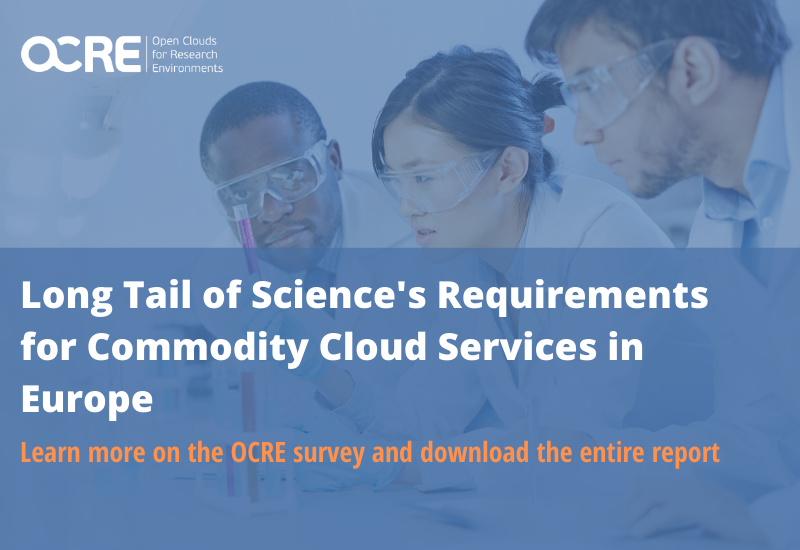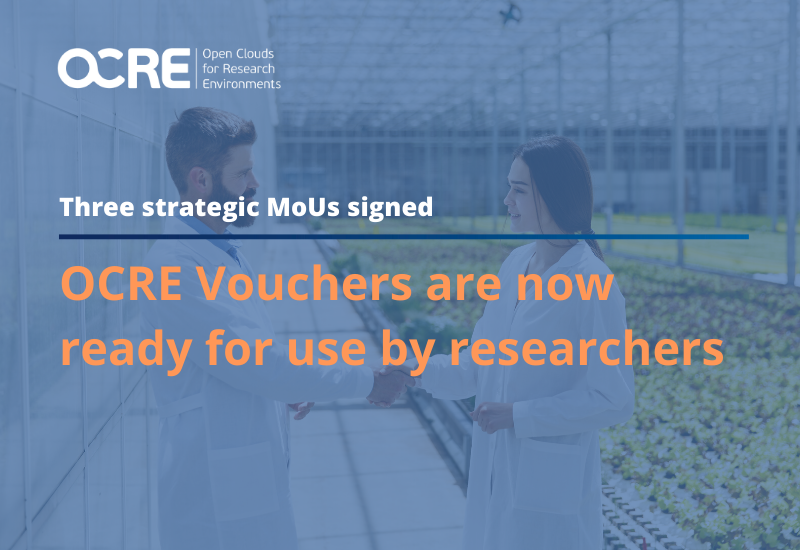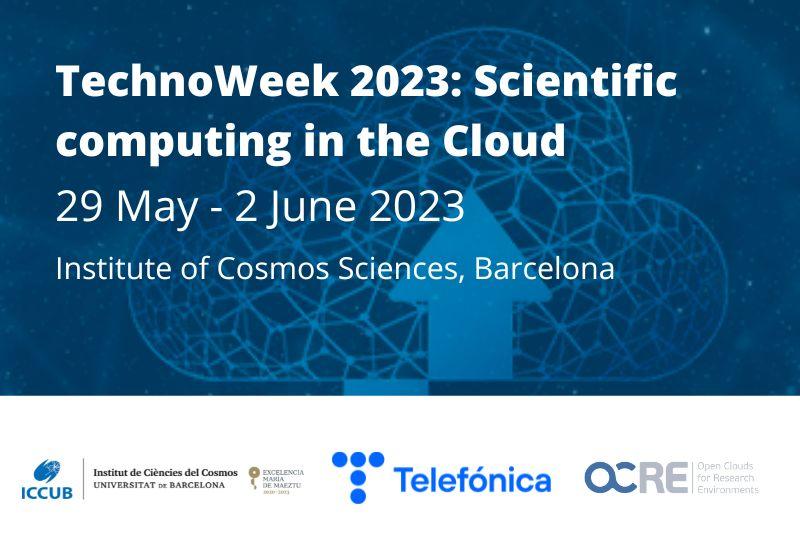
November 27,2019
News

OCRE has published the results of its commodity cloud requirements gathering survey, which was conducted by OCRE partner CERN in conjunction with Eurodoc and the Marie Curie Alumni Association. The analysis of the responses has allowed the identification of consumption habits, needs and technical requirements.
Requirements Gathered
The most used commercial cloud services by researchers was Dropbox (29%), 17% was using WeTransfer and 28% of the respondents were using Google Cloud.
Regarding how these cloud services were accessed, 64% of researchers accessed for free, 47% personally pay for these services and for around 33% the cloud service is funded by their university.
Almost half of the respondents (49.3%) need a medium capacity of commercial cloud services with high processing needs, requiring large amounts of software and data. A third of the respondents (34%) have low processing needs that require small-scale software and light data usage. A small proportion (16%) has intensive processing needs, necessitating huge software and data usage.
More specifically, the features most appreciated by researchers were accessing storage (64%) and computing services (51%). Researchers were also looking for engineering software tools and services, such as MATLAB, Mathematica, Ansys and AutoCAD (30%) and artificial intelligence, machine learning, and deep learning services, such as Keras and TensorFlow (20%).
Building upon EOSC-hub's work on uncovering researcher needs
EOSC-hub has done some preliminary work on uncovering researcher needs in their report Procurement requirements and demand assessment. Through the collaboration agreement in force between OCRE and EOSC-hub, OCRE benefits from some of EOSC-hub's findings.
EOSC-hub’s study confirms that there is a growing demand for digital services for research. From all the services that are being used by researchers, the most popular are data repositories and data registries, followed by a large variety of other services which are also currently being used (e.g. analytics, data management tools, collaboration services and general computational services).
The EOSC-hub study goes on to present a business model analysis in the EOSC context, with a specific focus on proposing mechanisms for acquiring digital services, based on the use cases where a researcher may look to acquire services on demand.
Looking ahead, the main work will be to further develop the identified business models and consider public-to-public, private-to-public and public-to-private scenarios also in relationship to the wider funding environment in to identify opportunities to enable an EOSC ecosystem with participation from commercial providers.
Who responded?
The respondents involved in the analysis were 72 persons in total, 53% female and 47% male, citizens of 31 different countries, 18 EU members states. The majority of the respondents had a PhD (40%) or were a postdoctoral researcher (36%). Just a minority were assistant professors (7%) and associate professors (7%). They had very different backgrounds, noting that the most represented fields were engineering and technology (29%), natural sciences (16%), social sciences (15%) and medical and health sciences (15%).


